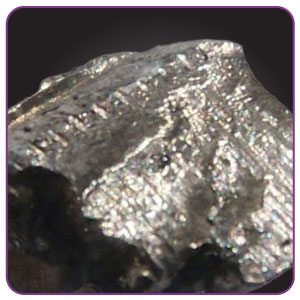Cerium

| Symbol | Ce |
| Atomic Number | 58 |
| Atomic Mass | 140.116 g.mol -1 |
| Discovered by | Jöns Jacob Berzelius and Wilhelm Hisinger in 1803 |

Chemical Properties of Cerium
| Group | Lanthanides | Melting point | 799°C, 1470°F, 1072 K |
| Period | 6 | Boiling point | 3443°C, 6229°F, 3716 K |
| Block | f | Density (g cm−3) | 6.77 |
| Atomic number | 58 | Relative atomic mass | 140.116 |
| State at 20°C | Solid | Key isotopes | 140Ce |
| Electron configuration | [Xe]4f1 5d1 6s2 | CAS number | 7440-45-1 |
| ChemSpider ID | 22411 | ChemSpider is a free chemical structure database. | |
What is Cerium?
- Cerium is a soft, malleable, ductile metal with an atomic number of 58 and is represented by the symbol Ce in the Periodic Table.
Uses of Cerium
- Cerium is the key component of mischmetal alloy which is used in flints for cigarette lighters. The reason for it is cerium produces sparks when struck.
- Used in the manufacture of arc lamps, and incandescent mantles for gas lighting.
- Acts as a catalyst in the conversion process of nitrogen oxide to nitrogen.
- Cerium sulfide is used as a pigment as it has a rich red colour.
- Used in almost all colour televisions and energy-saving lamps.
Properties of Cerium
- It reacts readily in the air and tarnishes gradually. It oxidizes rapidly in hot water, and slowly in cold water and dissolves in the acids.
- Cerium is one of the most abundant among the rare earth elements.
- It is found in lanthanides and makes about 0.0046% of Earth’s crust weight.
- World’s production of cerium marks up to 23000 tonnes a year which may increase as more cerium is used nowadays.
- Cerium has no biological role.
Certain Health Facts About Cerium
- Cerium is most dangerous in the working environment due to the fact that gases and DAMPs can be inhaled with air.
- Constant exposure to Cerium may cause lung problems and other serious diseases.

Comments